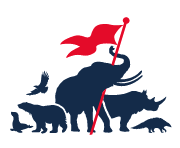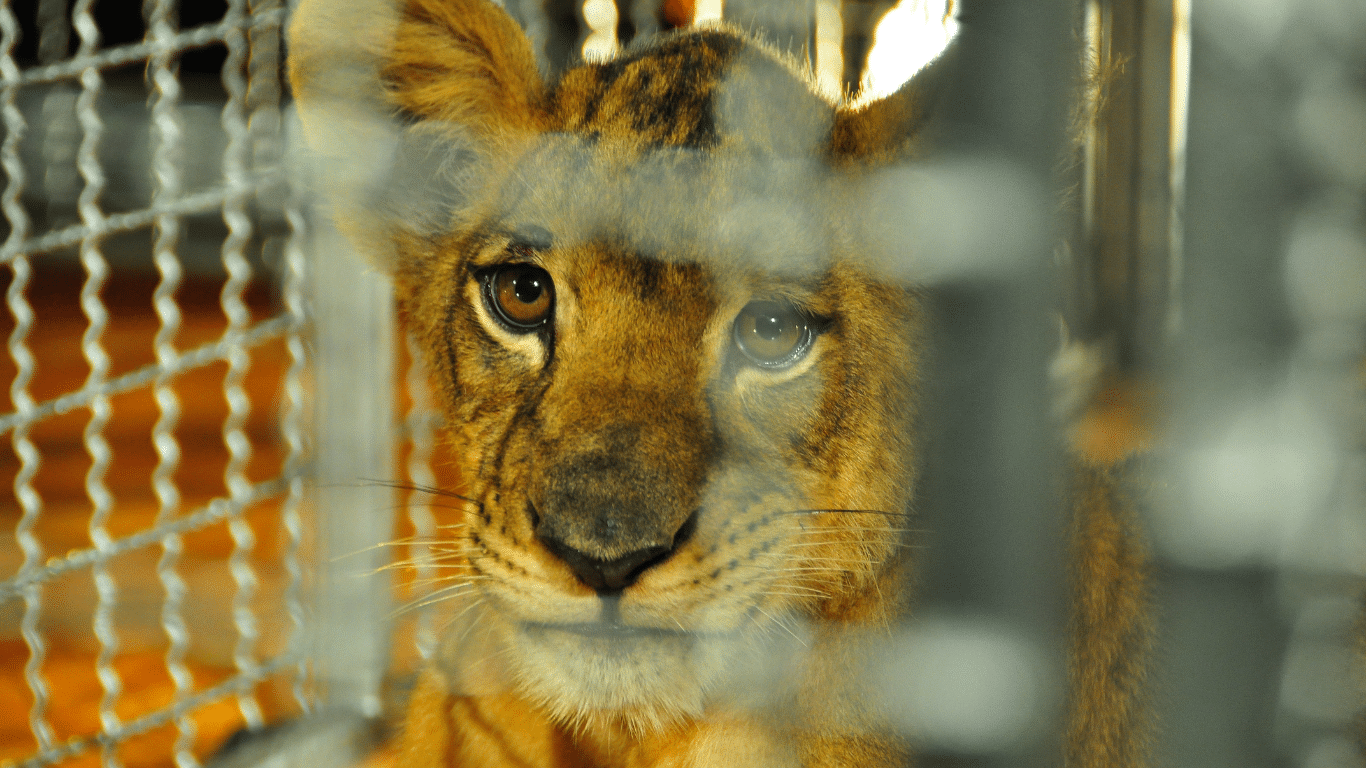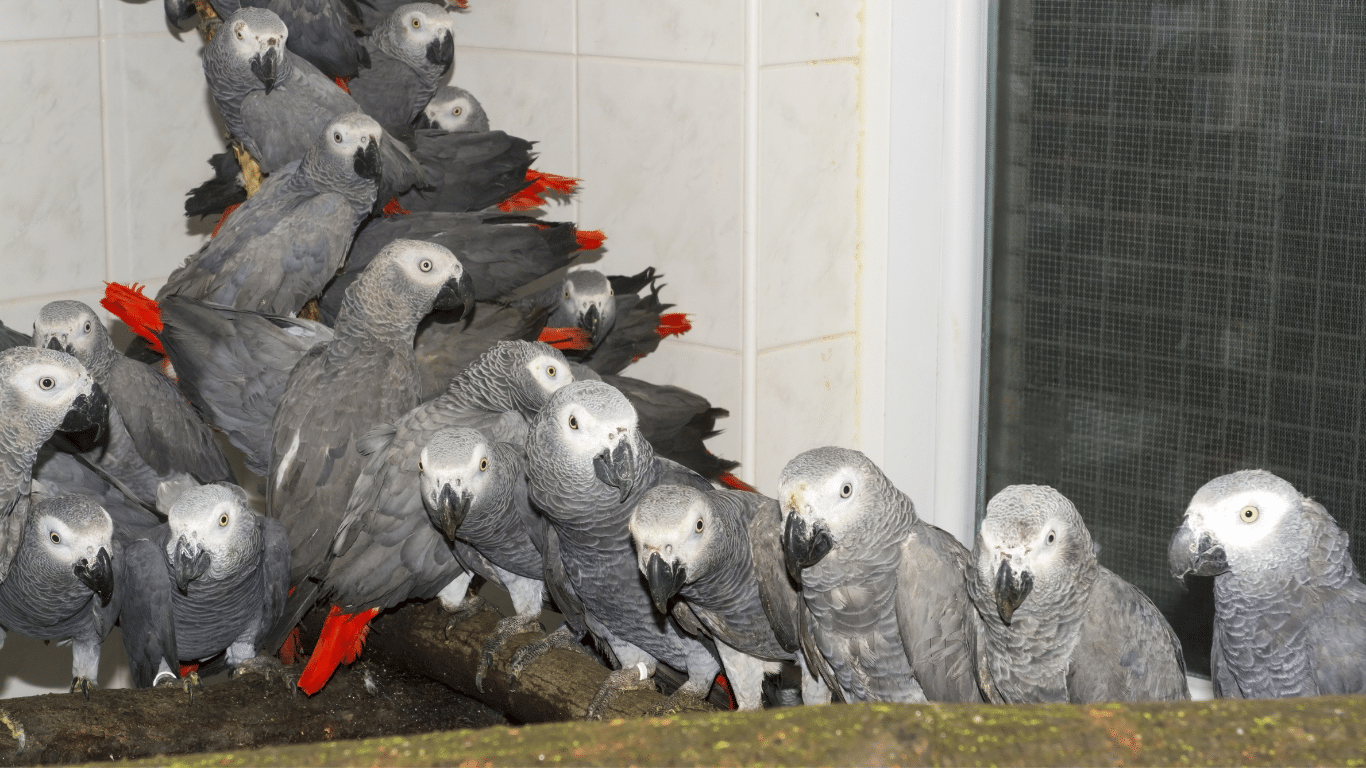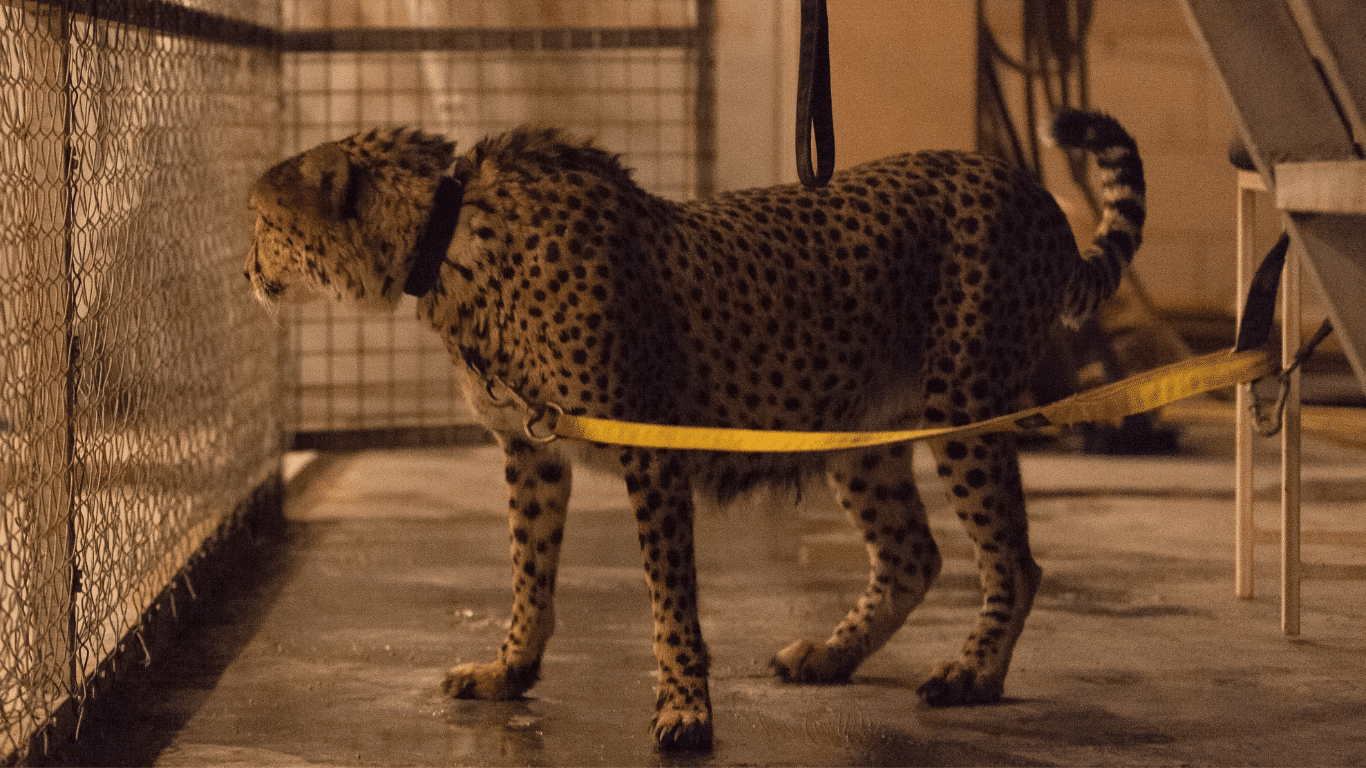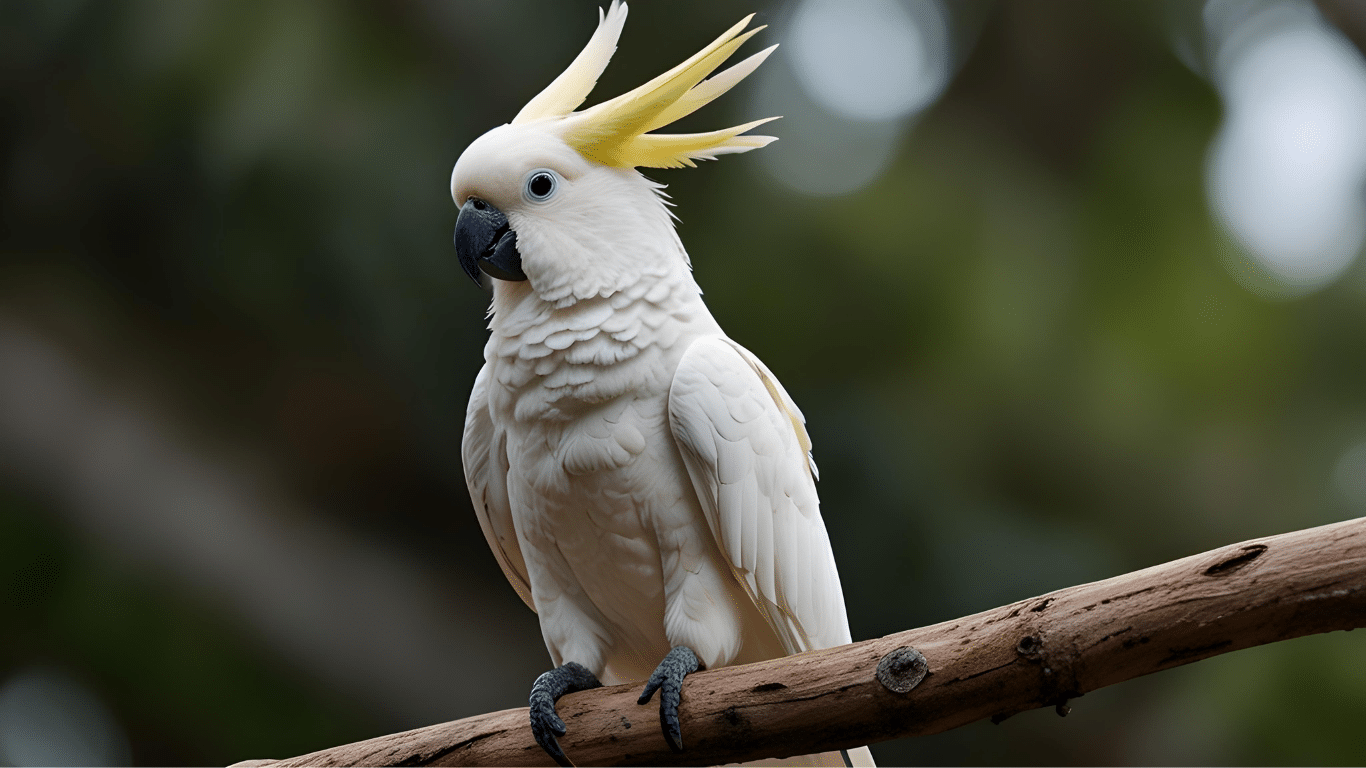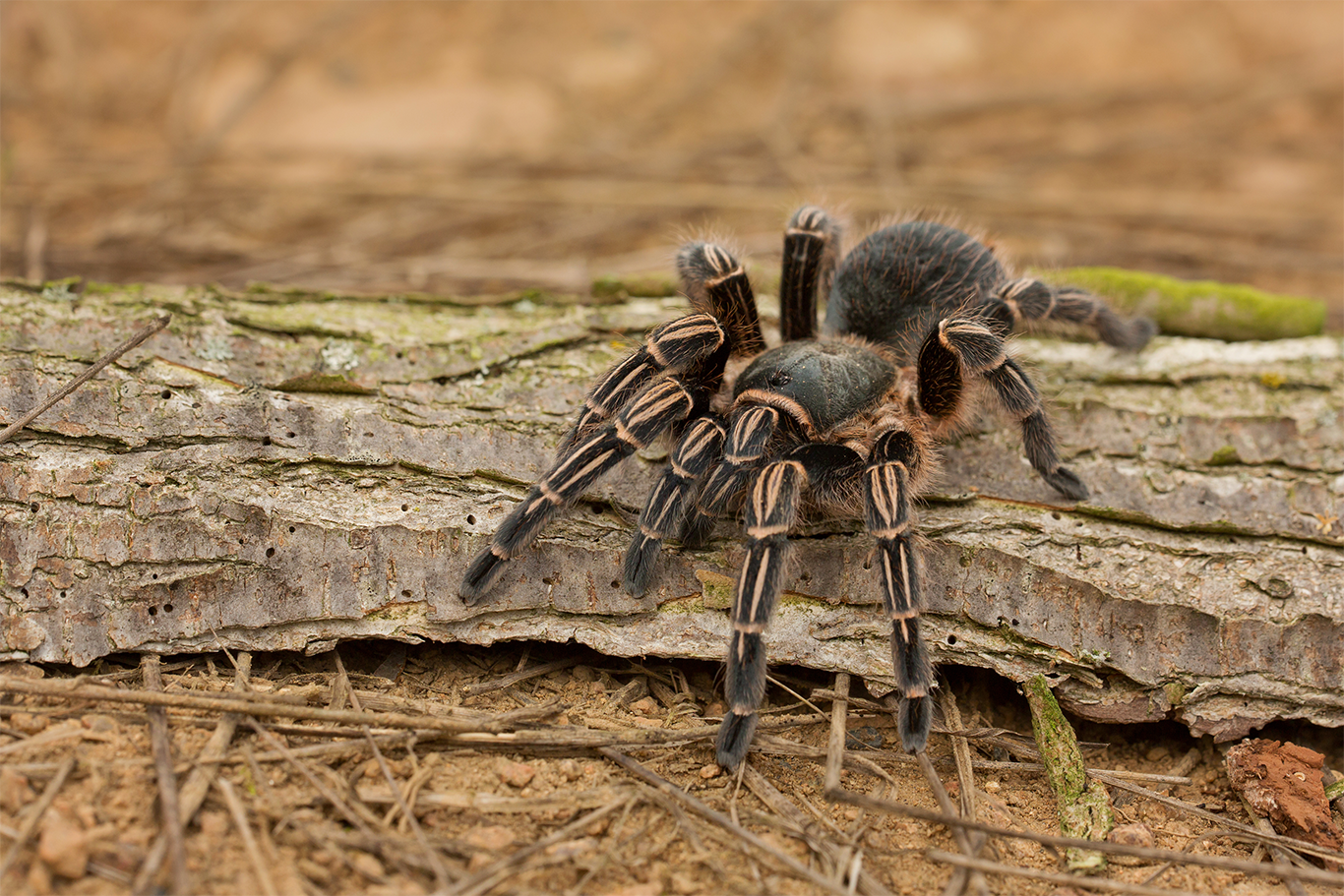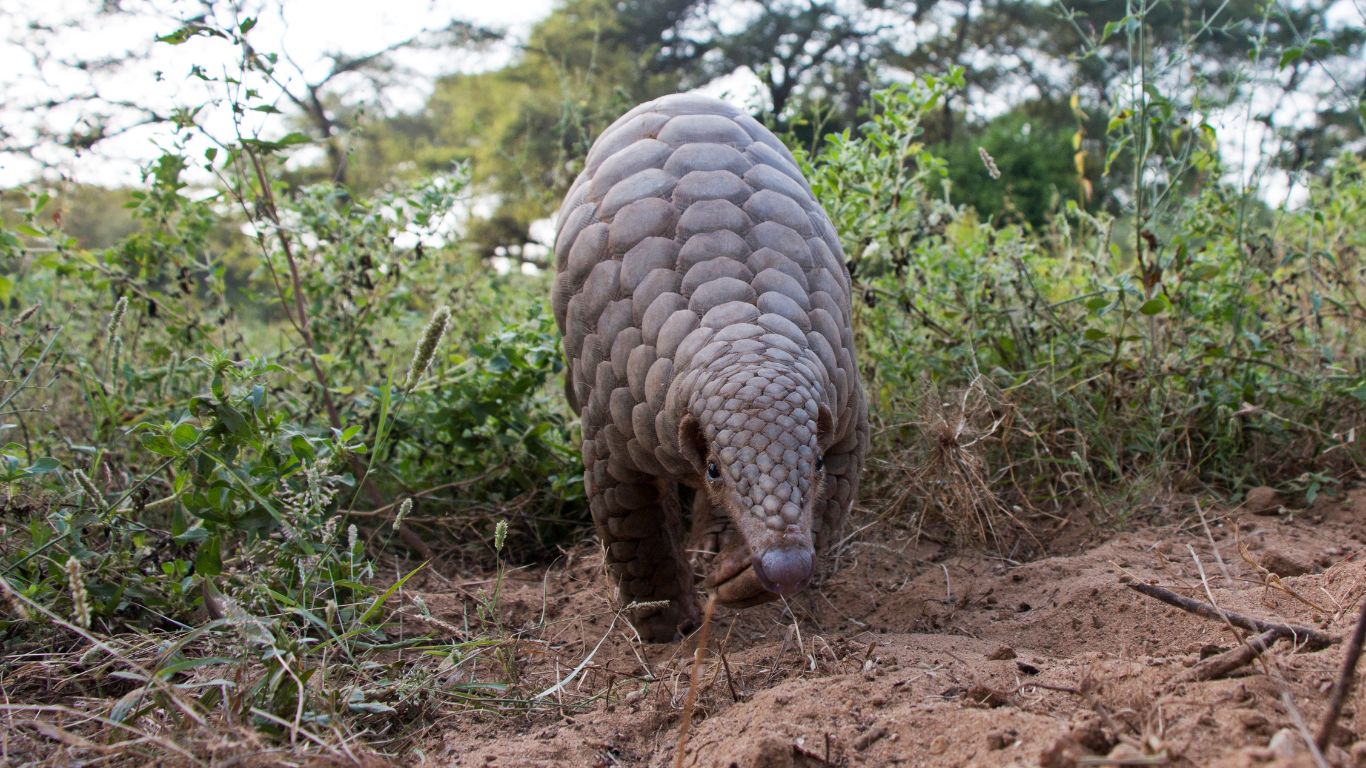Article written by Don Pinnock
Originally published by Daily Maverick (Oct 8, 2024)
Among the top three suppliers to the global wildlife market, South African breeders and exporters exploit loopholes and a lack of enforcement to bypass conservation rules.
South Africa is the biggest exporter of parrots in the world and, with Indonesia and Honduras, one of the top three countries delivering wildlife into the global marketplace.
The numbers are staggering. Between 2013 and 2023, South Africa officially exported more than 16 million live wild creatures, which included:
- 3,366,796 birds, mostly parrots;
- 23,803 mammals, including a huge number of marmosets and many lions, lechwes, tamarins, servals, cheetahs, tigers and grey wolves;
- 12,951,599 fish, dominated by sturgeon and including 252,000 seahorses; and
- 1,420 reptiles, mainly crocodiles and tortoises.
These numbers are extremely conservative, and here’s why. These are the exports documented by the Convention on International Trade in Endangered Species of Wild Fauna and Flora (Cites). Not counted are large numbers of creatures exported illegally, and possibly an even larger number of creatures not listed by Cites.
Of the estimated 11,000 bird species in the world, only 1,400 are Cites-listed; of around 6,400 mammals, only 1,500 are listed; and of 11,500 reptiles, only 1,600 are listed. For those that are unlisted, anything goes.
Birds
Over 10 years from 2013, Cites listed hundreds of bird species exported from South Africa for the pet trade. Most were smaller, cageable birds, but there were also francolins and a range of ducks, eagles, hawks, vultures, swans, geese and penguins.
Many more than those are exported but are not listed in the Cites database. Take songbirds, much desired for their sweet singing in lonely cages by people unaware of the cruelty. Of the estimated 6,659 traded species, research published in the Journal of Environmental Management last year found no songbirds listed by Cites.
Parrots
Parrots are an anomaly because South Africa has very few species. Generally, what we export are South American, Australian and Central African species that come from 410 South African breeding farms. Most of these are in the North West, Free State, KwaZulu-Natal and Gauteng.
Is captive breeding a conservation measure? A new study published in Conservation Biology by researchers from the World Parrot Trust and World Animal Protection says that in most cases current practices are not a straightforward conservation solution and inadvertently threaten wild populations.
According to the study, hundreds of thousands of parrots valued for their plumage, intelligence, mimicry, and rarity are traded globally each year. The global parrot trade increased from around 60,000 in 1990 to more than 500,000 in 2020.
Captive-bred parrots now lead the international wildlife trade, and South Africa’s mega-facilities dominate the market.
This drive to supply the exotic pet trade has driven the extinction of species in the wild and caused drastic population declines in formerly widespread and abundant species, such as the African grey parrot. It has also led to the spread of infectious diseases.
The problem, says the study, is that increasing the supply of captive-bred wildlife may also increase demand for wild-sourced animals by stimulating latent demand and normalising consumption. Global demand is escalating for wild-sourced specimens as breeding stock.
The trade also creates opportunities for the laundering and misdeclaration of wild-sourced specimens as captive-bred.
In the past, South Africa imported large volumes of wild-sourced parrots, particularly African greys, as breeding stock, but is now the world’s largest supplier of greys bred from these imports.
Several assessments across a range of species indicate that captive-bred birds are more expensive than wild-sourced parrots, in part because of major up-front costs associated with investment in infrastructure.
The study points out that while the profits go to relatively wealthy farm owners, the costs of monitoring the impacts of trade are often externalised by the industry, with the burden falling on governments or NGOs, often with little capacity to do so.
Conditions are not always ideal. In 2020, hundreds of dead parrots were discovered on the premises of a prominent parrot breeder in Gauteng. The SPCA searched Farmall Parrots after a tip-off and found about 300 dead birds in appalling conditions.
The same year, 150 dead parrots were found at the home of the vice-chairman of the Parrot Breeders Association.
Mammals
The primate trade is of great concern. A report by the EMS Foundation and Ban Animal Trading, Breaking Point: Uncovering South Africa’s Shameful Live Wildlife Trade with China, said no checks were conducted by South African authorities on the legitimacy or even existence of importers listed on permits. In a number of cases, these were found to be dummy entities or nonexistent.
The range of animals being exported from South Africa is extraordinary.
From OR Tambo Airport alone, from the start of 2016 to the end of 2022, 3,782 live primates were legally exported, plus 5,244 dead hunting trophies consisting of 3,349 chacma baboons and 1,886 vervet monkeys. During this period, 1,141 live bushbabies were exported, and nine as hunting trophies. (Who hunts tiny bushbabies?)
Zoos claim to play a major role in conservation and education. This is not only a fallacy, according to a report, Our Kin Discarded, but also a fiction that allows the zoo industry to continue its wildlife trading business with little scrutiny.
Zoos “play a potentially oversized role... in helping to launder illegal wildlife products into the supply chain,” says the report. “Animals sold to or exchanged between zoos are seldom traceable.”
According to the report, there’s a loophole in Cites so big that the very intention of the organisation can be undermined with the use of one letter, the purpose code Z (which applies to zoos), rather than code T (which applies to commercial transactions).
“In practice, it does not seem to matter if the zoo in question is unable to provide any conservation benefits or even meet minimal welfare requirements, nor does it matter if the trade to this so-called zoo has huge commercial value,” the report says.
“Countless examples have shown that by simply proclaiming the transaction to be for zoo purposes, a commercial enterprise and transaction is able to escape from Cites’ most fundamental safeguard.”
Smaragda Louw of Ban Animal Trading, one of the researchers of the Breaking Point report, says the South African Environment Department is lulling the public into a false sense of security by claiming that the international trade in wild animals is regulated.
“Nothing could be further from the truth. The Cites permit system is inherently flawed, and the regulation is beset by inefficiencies, audacious fraud and illegality.”
She says it becomes very difficult to distinguish between legal trade and illegal trade.
“Wildlife traffickers don’t have to make use of cruel methods to smuggle animals. They simply use the Cites permit system [fraudulently].”
Such fraud, she says, is either not detected by the authorities or not responded to by provincial and national regulators. “It is fair to conclude that the regulatory authorities do not effectively police the industry.”
Reptiles
A report in New Scientist on the reptile trade listed 4,500 reptiles sold internationally from South Africa, including thousands of tortoises and hundreds of snakes, lizards, rock monitors and crocodiles. Because many are not listed by Cites, only 1,420 were documented exports, mostly crocodiles.
According to the Breaking Point report, the pet industry itself acknowledged a 70% mortality rate. As many as four out of five animals captured and transported through the illegal wildlife trade will die in transit or within a year of captivity.
Breeders
With 410 breeders and exporters, the wild bird trade is by far the biggest. According to Breaking Point, few local traders are involved in other types of wildlife exports but they generate large volumes of exports.
For example, the Facebook page of African Pride Imports & Exports, under the name of Edward Coetzer, formerly listed for sale a range of animals including a black leopard, white lion cubs, white tiger cubs, and giraffes but now, according to photos, appears to specialise in white lions, tigers, cheetahs and wild dogs.
Impex Wildlife offers for export a range of big and small cats, giraffes and reptiles. It claims to be able to source wildlife both in South Africa and from abroad “using many agents throughout the world”. Its website says it can “arrange species of animal others cannot and is able to help re-export imported birds, reptiles and primates”. It can “source any zoo animals you can think of as well as redirect... exports of small mammals, birds, primates and reptiles”.
Mystic Monkeys and Feathers Wildlife Park in Limpopo breeds marmosets and exports them to a Chinese breeding farm, and sends penguins, cheetahs, lemurs, meerkats, bat-eared foxes and capuchins to a Chinese wildlife broker.
It also exports chimps, hyenas and lions, among other species.
Other exporters include Hartbeespoort Dam Snake and Animal Park, Wildlife Assignments International, Naaupoort Parrots, Anderson Wildlife Traders and Zoological Live Animal Suppliers.
The rarer the creatures, the harder they get hammered. It doesn’t mean all exported species are under threat; it’s that we just don’t know. It is largely a free-for-all.
Following discussion of the Breaking Point report in South African Parliament, the authors sent former Environment Minister Barbara Creecy a list of suggestions to clean up SA’s act on live wild animal exports, including:
- A halt to all trade that does not benefit conservation;
- Transparency of export information;
- Verification of traders and buyers;
- Increased enforcement; and
- Consideration of animal welfare in issuing Cites permits.
All these measures remain to be implemented. Creecy committed her department to undertake the necessary investigations, assess the accuracy of the report and see if measures were required to strengthen the regulatory system. She said permit requirements were being updated.
As her successor, Deon George, takes the reins in the Environment Department, the welfare of the huge number of wild animals that are exported will be one of the horses he will have to ride.
The range of animals being exported from the country
Cheetah, Barbary sheep, blackbuck, black-headed night monkey, South American fur seal, black-faced black spider monkey, red-faced black spider monkey, silvery marmoset, buffy-tufted marmoset, Geoffroy’s marmoset, common marmoset, black-tailed marmoset, black-tufted marmoset, grey wolf, caracal, brown capuchin, white-faced capuchin, wedge-capped capuchin, zebra duiker, white rhinoceros, red-tailed monkey, blue monkey, De Brazza’s monkey, red-backed bearded saki, black bearded saki, vervet monkey, African civet, Angolan colobus, eastern black-and-white colobus, bontebok, grizzled tree-kangaroo, black rhinoceros, Hartmann’s mountain zebra, patas monkey, common brown lemur, African wildcat, black-footed cat, wildcat, southern lesser galago, Senegal galago, giraffe, pygmy hippopotamus, hippopotamus, sable antelope, striped hyena, spotted-necked otter, lechwe, ring-tailed lemur, Geoffroy’s cat, ocelot, serval, African elephant, bobcat, crab-eating macaque, rhesus macaque, honey badger, South American coati, scimitar oryx, Arabian oryx, chimpanzee, lion, jaguar, leopard, tiger, hamadryas baboon, chacma baboon, blue duiker, white-faced saki, kinkajou, leopard cat, aardwolf, cougar, saddle-back tamarin, emperor tamarin, red-bellied tamarin, midas tamarin, cotton-top tamarin, black-capped squirrel monkey, common squirrel monkey, brown bear, red-ruffed lemur, fennec fox, angulate tortoise, black-headed python, Burmese python, gila monster, green iguana, reticulated python, Bredl’s python, Nile crocodile, king cobra, Anchieta’s python, Brongersma’s python, ball python, African rock python, leopard tortoise, veiled chameleon, woma python.
The sorry life of Tico the stolen cockatoo
Let’s imagine the route of a young cockatoo – let’s call him Tico. He hatched in a tall kapok tree in a tangled rainforest canopy amid the constant hum of wildlife. His parents guided him and his siblings as they learnt to fly, forage for food and evade predators. The freedom of flight was exhilarating.
But logging, mining and wildlife poaching had penetrated the forest. One day, a net dropped over him and his flock on a riverbank. Tico’s cries of distress were muffled by the thick canopy, and soon he found himself in a cramped cage.
His journey had just begun.
He was smuggled through dense forests and bustling river ports, eventually landing in a nondescript warehouse on the outskirts of a small Indonesian town, where he was sold to an exotic animal trader who shipped him in a dark, airless crate to South Africa.
On arrival, he found himself in an industrial-scale breeding farm outside Johannesburg that supplied the international pet trade. It housed thousands of birds – parrots, cockatiels and other exotic species – all kept in small breeding enclosures.
The farm needed him for the genetic diversity of its breeding stock. His paperwork had been falsified, declaring him captive-bred to avoid the restrictions imposed by Cites. He was paired with a captive-born female.
After several years, Tico was packed into a crate once more, this time bound for a pet market in southern China alongside dozens of other birds. In a market, his bright yellow crest and white plumage caught the eye of many shoppers and he was bought by a young man living in a high-rise apartment.
His cage, though ornate and well-kept, was small and lonely. The young man who had bought him knew little about the bird’s needs or complex intelligence. Tico spent his days alone in the apartment, staring through the bars at the bustling city below.
Time dulled Tico’s once-bright feathers, and his days became a blur of repetition. The man who had bought him, though kind in his own way, soon lost interest.
Tico became another fixture in the apartment, his jungle family a fading memory. He could be confined that way for the next 70 or 80 years and most likely outlive his owner.
He would probably be handed from owner to owner throughout the decades – a hidden statistic of the global pet trade.
